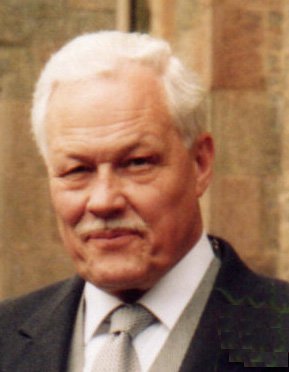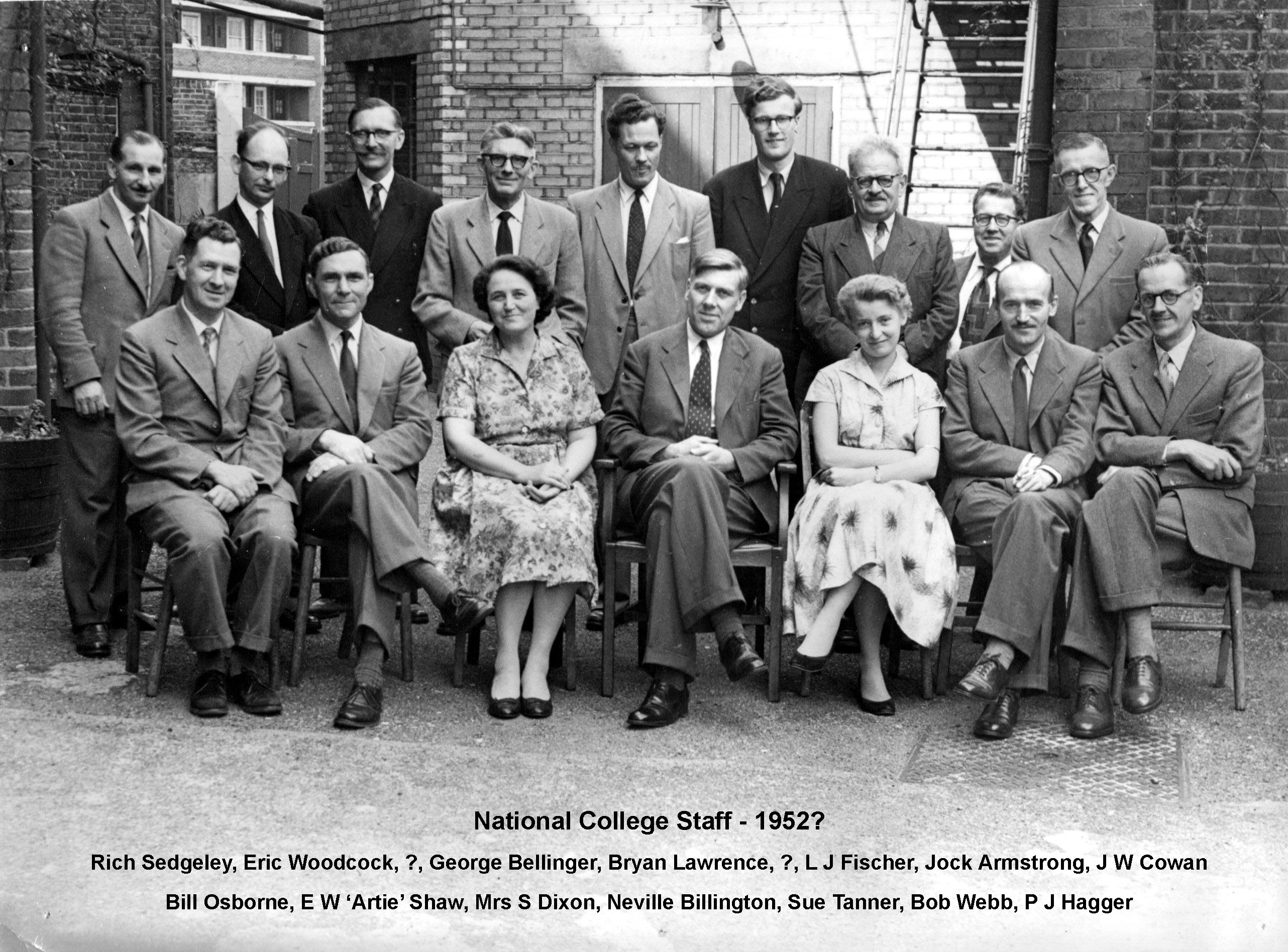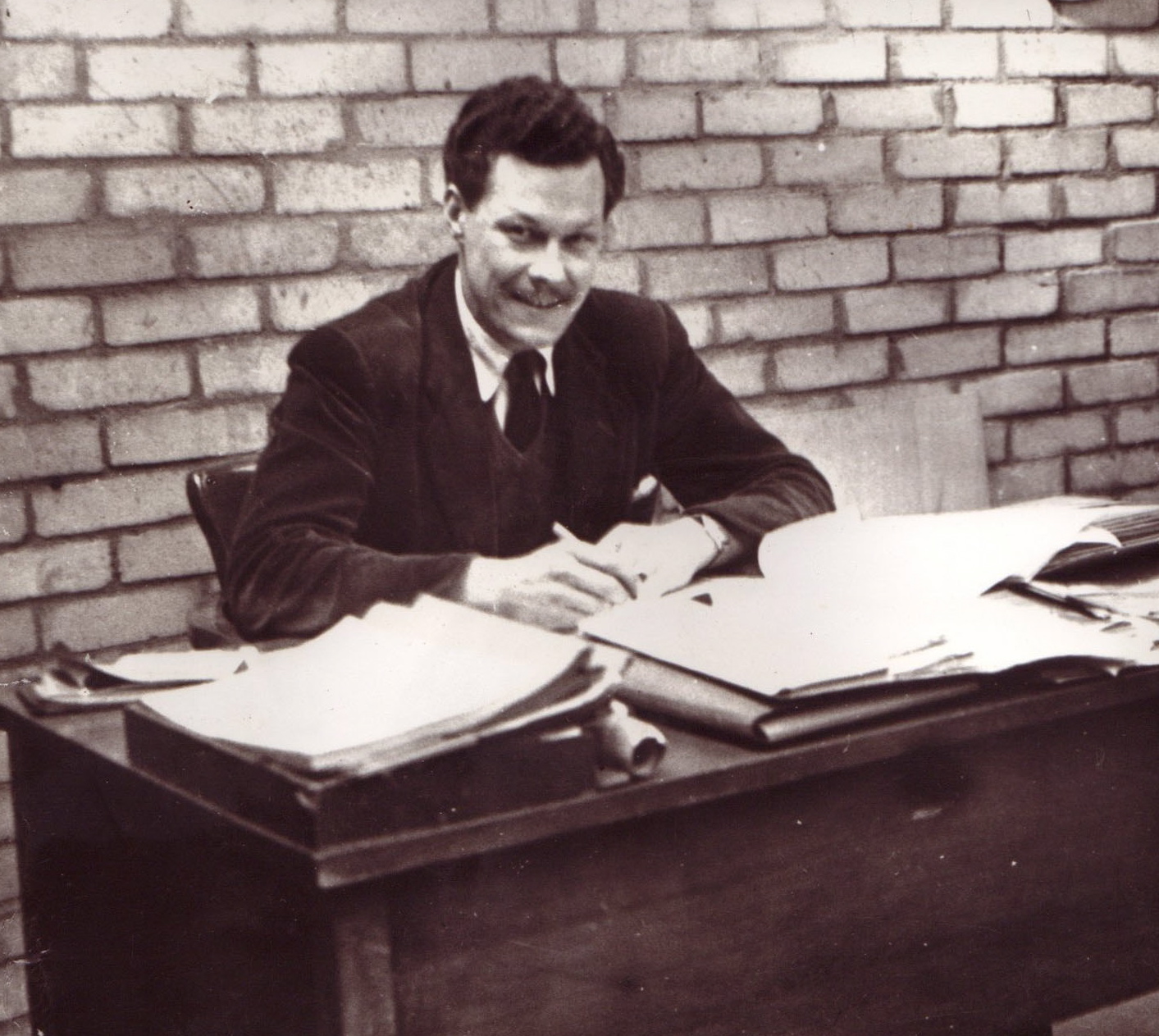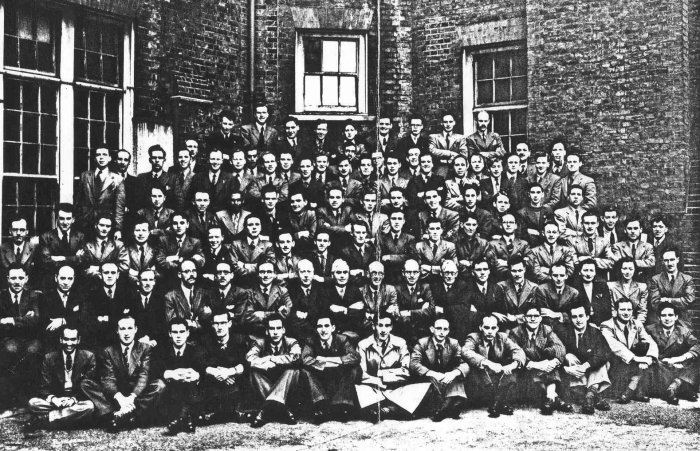
| Bryan
Lawrence 1923 - 2010 |
 |
Bryan Lawrence FCIBSE
a Member of IHVE later CIBSE for over 60 years sadly died 17th
November 2010.
Bryan attended the National College in 1946 as one of the College's first intake group of Students. After successfully completed his studies and attaining the course Diploma he was asked to become a Lecturer at the College so in 1948 became a full time member of staff lecturing in Air Conditioning & Refrigeration. His involvement with the National College continued until his retirement in 1983. Many of todays older Building Services Engineers owe the successful start of their careers to the good grounding in the academic subjects they were taught at the National College by the team of dedicated Lecturers. The writer of this webpage being one of them. Bryan did much to advance works on psychrometrics including,
After his
retirement from teaching in 1983 he maintained an active
involvement with the Institution and was committed to the
profession, serving on many CIBSE committees, and contributing to the
CIBSE Guides.
During this 15 year period after retirement he was acting Head of Qualifications and Membership for the Institution. For all his important work with CIBSE he was awarded their Bronze Medal in 1992. |
Bryan will always be remembered for the high quality of his teaching,
his commitment to the profession and his dry sense of humour.


Bryan checking students course work


During his long career in Building Services Engineering he wrote and also co-authored
many papers, publications and journal articles, a sample of which are listed below.
| Two National College
Technical Memorandums TM 7 Fluid flow tables in SI Units A Amour, M Farrell, B Lawrence October 1968. TM 11 New Psychrometric Data for Air. W P Jones, B Lawrence Fundamentals of Air Conditioning for CERCI An Outline of Air Conditioning September 1960 in Annals of Occupational Hygience Vol 2. No 3. Energy Conservation - Methods and additions to Insulation February 1980 |



1946 the first student intake of the National College photographed in the courtyard
of the annexe opposite the Borough Polytechnic, Elephant & Castle, London
Bryan is in the second row up - 5th person from the right.
|
THE SECOND WORLD WAR
A miraculous escape During
his late teens Bryan was conscripted joining the RAF and part of his training for bomber
command was required to be carried out in South Africa.
After completing his RAF training in South Africa he was returning to Britain in 1942 on the passenger liner Laconia which was full of women, children and Italian POWs when it was attacked by torpedoes and sunk off the coast of west Africa by a German submarine. Bryan's survival from the sinking of the Laconia is nothing short of miraculous. From stepping off the side of the ship into the ocean (not being able to swim), then being sucked down as it sunk, to being blown back to the surface by the force of the explosion when the ships boilers exploded. When the Submarine commander saw that he had sunk an unarmed passenger vessel he surfaced and proceeded to take some of the survivors on board. The submarine radioed to ask any German ships local to the area to pick up the remaining survivors who were adrift in small lifeboats. Unfortunately the American air force base on nearby Ascension Island heard the message and sent a Liberator bomber to attack the submarine. The bombs dropped by the aircraft missed the U-boat but tragically killed many of the Laconia survivors being towed in the lifeboats. Was this the first incident during WWII of what is now known as death by "friendly fire". After the bombing the U-boat submerged, the people on board the U-boat having returned to the lifeboats. Bryan was very lucky to have survived the bombing but then became one of many souls adrift in the lifeboats for 5 days until they were picked up by a Vichy French battleship and were later repatriated. As he had then become
a POW, when he returned to Britain, he could not be sent on active
bombing missions over Germany, as any ex-POW who was again taken
prisoner was shot. So he was posted to Scotland to become a training
instructor, for the remainder of WWII.
So by a strange turn
of fate, Bryan made a POW by the sinking of the Laconia and being taken
prisoner by the U-Boat commander Capt Hartenstein (whom he met) was
prevented from seeing active war service. The death rate for aircrew
who
served in Bomber Command during WWII was appalling.
The BBC have recently made a drama documentary shown on BBC2 in January 2011 about the Sinking of the Laconia and the suffering of the survivors adrift for 5 days before being rescued. |
